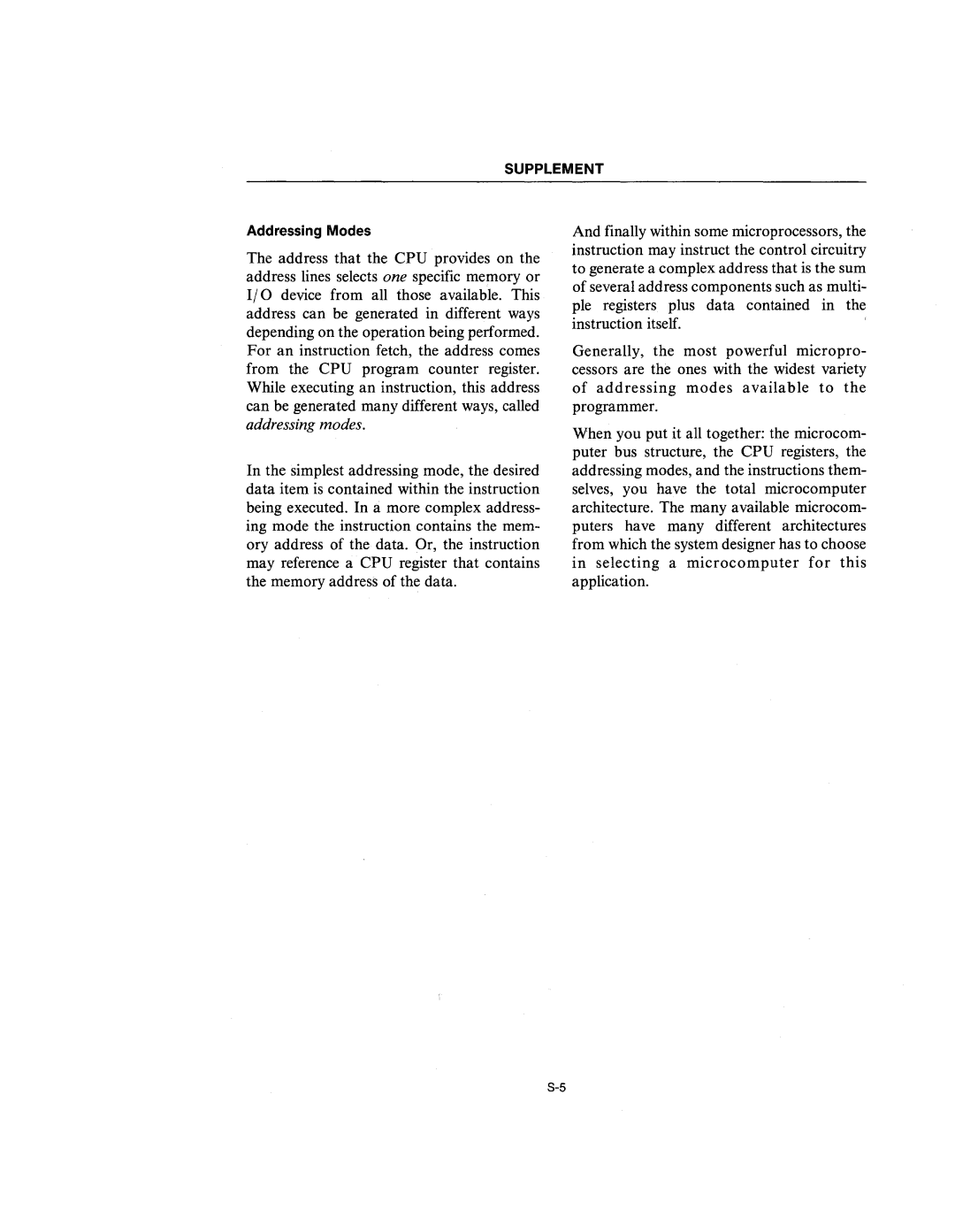
SUPPLEMENT
Addressing Modes
The address that the CPU provides on the address lines selects one specific memory or I/O device from all those available. This address can be generated in different ways depending on the operation being performed. For an instruction fetch, the address comes from the CPU program counter register. While executing an instruction, this address can be generated many different ways, called
addressing modes.
In the simplest addressing mode, the desired data item is contained within the instruction being executed. In a more complex address- ing mode the instruction contains the mem- ory address of the data. Or, the instruction may reference a CPU register that contains the memory address of the data.
And finally within some microprocessors, the instruction may instruct the control circuitry to generate a complex address that is the sum of several address components such as multi- ple registers plus data contained in the instruction itself.
Generally, the most powerful micropro- cessors are the ones with the widest variety of addressing modes available to the programmer.
When you put it all together: the microcom- puter bus structure, the CPU registers, the addressing modes, and the instructions them- selves, you have the total microcomputer architecture. The many available microcom- puters have many different architectures from which the system designer has to choose in selecting a microcomputer for this application.
